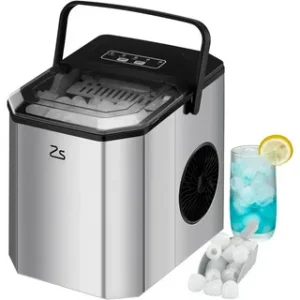When you’re elbow-deep in a prop firm challenge, desperately trying to follow the rules, keep drawdowns at bay, and reach profit targets, it’s simple enough to forget something that might actually give you a pretty big advantage: the type of chart you’re working with.
Yes, chart types.
Now, before you groan and assume, “A chart’s a chart, right?” — let’s consider.”. If you’re operating MT5 (which most prop firms favor these days), you have access to a few different types of charts: line, bar, candlestick, and with some fiddling or custom indicators, Heikin-Ashi and Renko too.
So the actual question is: do the charts you use actually matter when you’re attempting to pass a prop firm test?
Short answer? A big yes.
Why Chart Types Even Matter
A chart is merely a method to represent price data. But how you view that data can completely alter how you perceive the market — and how you trade.
Let’s say you’re looking at a typical candlestick chart. You’ve got open, high, low, and close for every time period, and the candles tell a fairly detailed picture of price action. You can see wicks, changes in momentum, engulfing patterns, you name it. But convert to a line chart, and that picture is reduced to bare essentials — only the closing price. Everything else?
That minimalism could work for some traders, perhaps particularly if you’re one to overanalyze or get analysis paralysis. But others? It’s going to be like trading with a blindfold.
The type of chart in MT5 you look at does influence how you perceive the market. And in a prop firm challenge — where every pip, every risk-to-reward call, and every second of hesitation matters — that can be the difference between success and failure.
The Pressure of a Prop Firm Challenge
If you’ve done a challenge in the past (or are going to do one), you know it: these aren’t to be taken lightly.
You’ve got
- A narrow time window
- Profit levels to achieve (typically 8-10%)
- Maximum drawdown and daily loss guidelines (extremely strict)
And on occasion, trading restrictions such as news events or over-weekends
Now add the psychological stress of having it known that one mistake can disqualify you. That’s a combination for second-guessing, overtrading, or undertrading every setup.
This is precisely why your chart configuration must cooperate with you, not against you. The correct chart type can assist you to identify clean setups more quickly, maintain your concentration, and eschew the noise that blinds most traders.
Most Common Chart Types
Candlestick Charts – The Crowd Favorite
Most used by retail and prop firm traders alike.
Candlestick charts are by far the most widely used — and rightfully so. They cram a huge amount of information into every candle, providing you with information on momentum, reversals, and sentiment.
Pros:
- Distinct visual representation of price action
- Easy to identify patterns such as engulfing, pin bars, inside bars, etc.
- Excellent for both novice and seasoned traders
Cons:
- Can be cumbersome with too much noise
- Temptation to overanalyze or hunt every setup
Best for: Scalpers, swing traders, price action traders — essentially everyone, provided you’re skilled at reading market structure.
Line Charts – Beauty in Simplicity
Completely underappreciated in prop fighting.
Line charts simply show the closing price, therefore eliminating a lot of noise — which in fact allows you to really concentrate on the overall trend or structure and not get carried away.
Pros:
- Excellent for determining major support/resistance areas
- Helps keep things straightforward on edge
- Less emotional response to “loud” candles
Cons:
No wicks = no information on intrabar activity
Can conceal potential reversals or price manipulation
Best for: Traders who are easily overwhelmed or want a “big picture” of the price without mess.
Bar Charts – The OG Old School
Not really that common anymore, but still effective.
Bar charts show you the same information as candlesticks (OHLC) but display it differently — with vertical lines and tiny horizontal ticks.
Pros:
- Less visually “emotional” than candles
- Assists traders in seeing structure rather than patterns
Cons:
- More difficult to read at a glance (particularly under time constraint)
- Less intuitive for pattern identification
Ideal for: Experienced traders or those using legacy systems. Most likely not best for beginners with a time-pressured challenge.
Heikin-Ashi – Smooth Operator
Game-changer for trend followers.
Heikin-Ashi charts apply an average formula to even out price action, making trends really easy to identify. In a test, that can be gold.
Advantages:
- Smoother trends and fewer false signals
- Prevents choppy trades
- Good for allowing winners to run
Disadvantages:
- Lagging indicator (not reflecting true price)
- Difficult to identify exact entry/exit points
Best for: Traders who tend to get shaken out early. It’s a perfect visual filter for noise in the market.
Renko Charts – The Noise Eliminator
Ideal for those who simply want clean trend signals.
Time is irrelevant to Renko — it only plots bricks when the price moves by a certain amount. This wipes out small fluctuations and makes the chart extremely clean.
Advantages:
- Amazing for picking up trends and momentum
- No time element = less emotional stress
- Dances over noise better than anything
Disadvantages:
- Does not display time-based data
- Can lag on entrances and exits
- Not native on MT5 (requires custom indicators)
Recommended for: Traders who wish to eliminate distractions and simply ride the large waves. Works well for prop challenges, particularly on the more volatile pairs.





